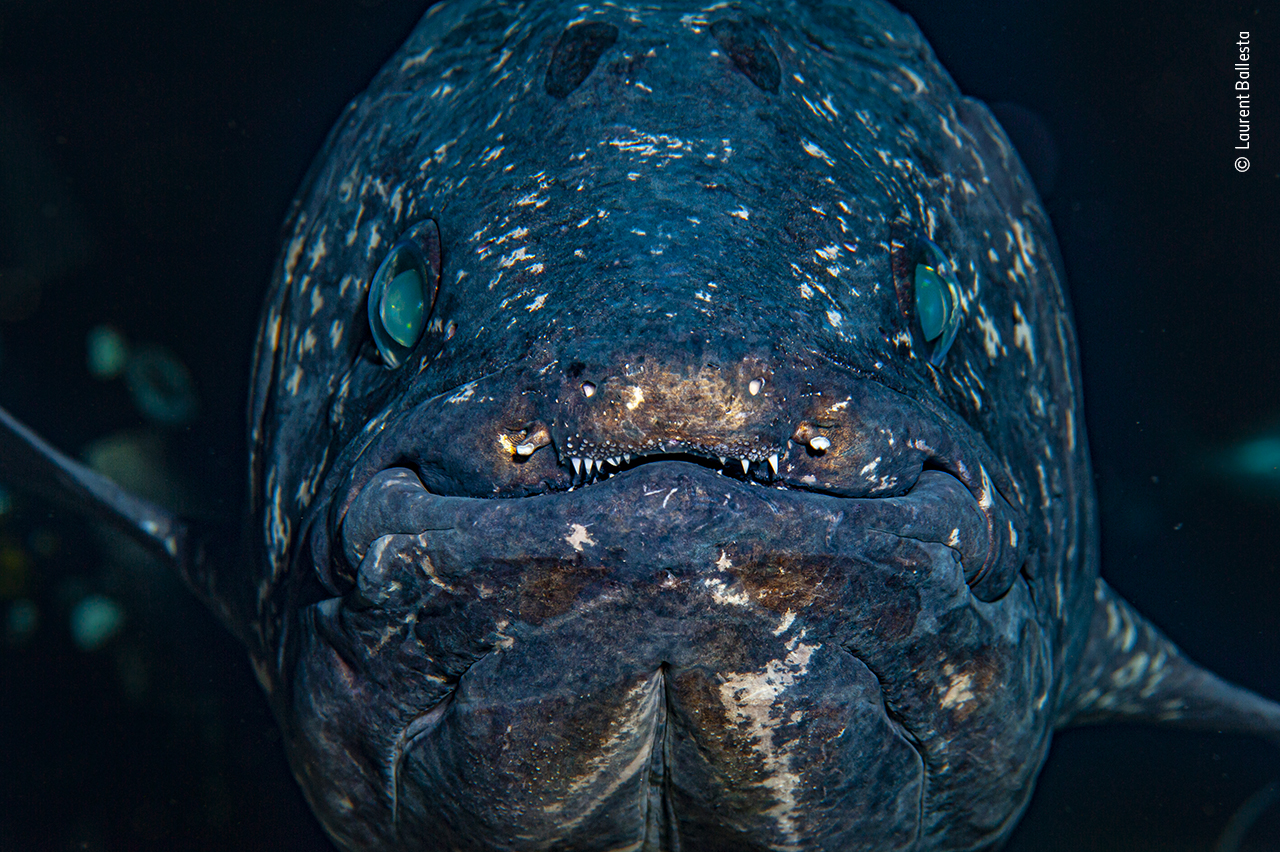Visit the exhibition
Discover the incredible stories of life on our planet through powerful photography and expert insight.
Tickets on sale now.

A coelacanth stares calmly into Laurent's lens, 120 metres below the surface of Sodwana Bay, on the east coast of South Africa.
Diving technology and years of careful preparation enabled Laurent and his team to spend 15 minutes with the fish. 'It was neither curious nor afraid,' he says, 'just peaceful.'
A scientific marvel, coelacanths, sometimes called fossil fish, were thought to have gone extinct around 80 million years ago, long before the disappearance of the dinosaurs. But in 1938, a living population was uncovered after one was caught in a trawl net at the mouth of the Chalumna River, South Africa.
A second population was later uncovered off the Comoro Islands. While this was a ground-breaking 'discovery' for Western science, the fish were a common sight among the local population who call them gombessa.
These critically endangered fish - up to 1.8 metres long - have unique traits including lobed fins that move in a similar way to the limbs of four-legged animals, a hinged skull for a very wide gape and an electroreceptor organ.
Today there are only three known populations of coelacanths in the world. Their mysterious history makes them highly sought after by aquariums and private collectors, threatening their survival.
How you can help
Discover the incredible stories of life on our planet through powerful photography and expert insight.
Tickets on sale now.

France
Laurent has authored 13 photography books on underwater wildlife. As co-founder of Andromède Océanologie, he’s been leading major expeditions for 10 years. He illustrates the underwater world as both a naturalist and an artist, whether that be capturing the first images of a coelacanth taken by a diver at a depth of 120 metres, documenting 700 sharks off Fakarava hunting at night or photographing the deepest and longest dive in Antarctica.
Help us harness the power of photography to advance scientific knowledge, spread awareness of important issues and nurture a global love for nature.